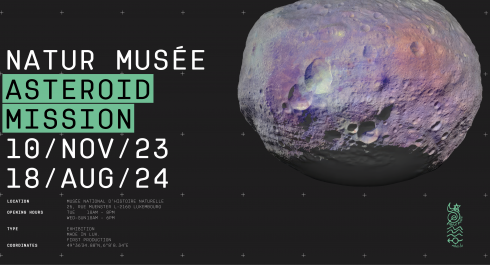
Exhibition « Asteroid Mission »
Asteroids have been colliding with Earth for a long time. Even today, the solar system is full of debris from its early days. There are currently almost 200 known impact structures on Earth.
The Vredefort crater is the largest known meteorite impact crater on Earth, with an estimated diameter of around 300 km. It was formed around 2 billion years ago when a giant meteorite crashed into the Earth at an estimated speed of 20 km/s, creating an explosion that released energy equivalent to several billion times that of the Hiroshima atomic bomb.
When will the next object from the solar system hit the earth? How many near-Earth asteroids are there? How are potentially dangerous asteroids detected? It is very likely that a dangerous asteroid will be discovered in the future. How can we protect ourselves from this?
The exhibition "Asteroid Missions" is about the history of the solar system, the formation and development of asteroids, space resources, planetary defense and an eventual future life beyond Earth.
What treasures are hidden on these celestial bodies? Who owns the treasures of space? What technological challenges do we have to master in order to be able to live and work over a very long time?
All these questions are addressed in the exhibition "Asteroid Missions", which will be on display on the 2nd floor of the National Museum of Natural History in Luxembourg from 10 November 2023 to 18 August 2024. A programme of conferences, workshops, discussions and interactive theme nights complements the exhibition.
Useful information
When
From Friday 26.04.2024 to Sunday 18.08.2024
12H00
- 18H00

